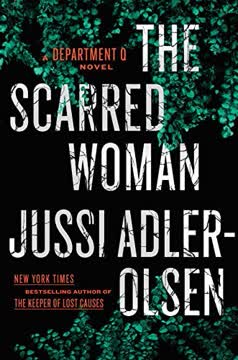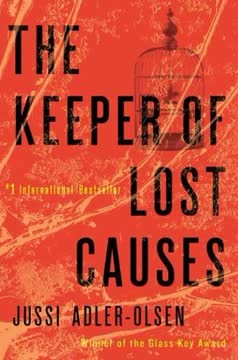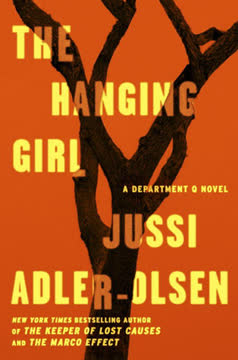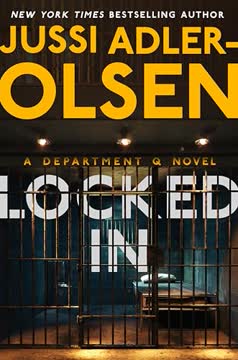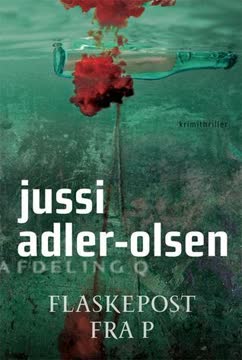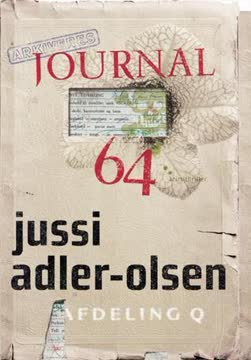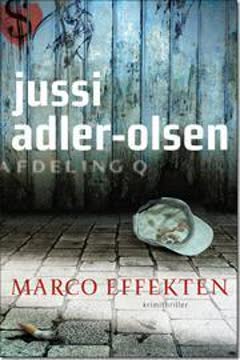Plot Summary
A Child's Dark Memories
is caught in a tense family environment, counting windows to distract herself from the chaos. Her father has left, and her mother and grandmother are embroiled in a bitter argument. Dorrit's grandfather, a former German soldier, shares his past with her in a secret room filled with wartime memorabilia. This unsettling glimpse into her family's history leaves a lasting impression on Dorrit, shaping her understanding of the world and her place within it.
Denise's Desperate Struggles
in a rundown apartment complex, trying to maintain her appearance and dignity amidst chaos. Her strained relationship with her mother and grandmother is exacerbated by financial struggles and a lack of direction. Denise's interactions with her sugar daddies provide temporary relief but no real escape from her situation. Her grandmother's harsh criticism and her mother's weakness only fuel Denise's determination to find a way out, even if it means resorting to questionable means.
Rose's Fractured Reality
as she struggles with the demands of her job and unresolved trauma from her past. Her father's death and the memories it stirs up lead to a breakdown, manifesting in obsessive behaviors and a disconnect from reality. Rose's colleagues, Carl and Assad, are concerned but unsure how to help her. As Rose's grip on reality slips, she becomes increasingly isolated, her inner turmoil threatening to consume her.
Anneli's Deadly Vendetta
embarks on a deadly mission to rid society of those she deems worthless. Her recent cancer scare and years of dealing with ungrateful clients push her over the edge. Anneli meticulously plans her attacks, using stolen cars to run down her victims. Her first attempt fails, but she remains undeterred, driven by a twisted sense of justice and a desire for control over her life and death.
Carl's Unofficial Investigation
becomes intrigued by the similarities between two murder cases. Despite being unofficially involved, he begins to piece together the connections, driven by a sense of duty and curiosity. With the help of his team, Carl uncovers clues that suggest a link between the past and present murders. As he delves deeper, Carl must navigate office politics and personal challenges to uncover the truth.
Jazmine's Risky Decisions
faces a crossroads in her life. Her interactions with Denise and Michelle lead her to consider drastic measures to secure her future. Jazmine's past decisions weigh heavily on her, and she contemplates using her body as a means to an end. Her risky choices reflect a desperation shared by many in her situation, highlighting the societal pressures and personal struggles that drive her actions.
Rose's Desperate Situation
Bound to a toilet in Rigmor Zimmermann's bathroom, Rose is a prisoner of Denise and Jazmine. Her mind is a whirlwind of fear and memories of her abusive father. The girls, fearing Rose might expose their crimes, have left her restrained, promising to call for help once they escape. Rose, however, doubts their intentions and contemplates her grim fate. Her thoughts drift to her past, her father's cruelty, and the overwhelming desire for peace, even if it means death.
Denise and Jazmine's Dilemma
Denise and Jazmine are on edge after Michelle's death and the robbery. They fear exposure and betrayal, especially from Michelle, who they suspect might have informed the police. Denise, driven by survival instincts, plans to confront Anneli, whom they suspect of being a threat. Jazmine, overwhelmed by the chaos, suggests fleeing to South America, but Denise insists on dealing with Anneli first, revealing a darker, more ruthless side.
Anneli's Calculated Moves
Anneli, a caseworker turned killer, is adept at deflecting suspicion. When questioned by the police about her connection to the hit-and-run victims, she skillfully redirects their focus onto Michelle's boyfriend, Patrick, and hints at a connection between Michelle and Birna. Her calm demeanor and fabricated stories convince the police of her innocence, allowing her to continue her deadly mission undetected.
Carl's Relentless Pursuit
Detective Carl Mørck is determined to uncover the truth behind the interconnected cases. Despite the chaos and pressure from the media, Carl remains focused on finding Rose and understanding the link between the murders. His investigation leads him to question the motives and backgrounds of the Zimmermann family, revealing a web of deceit and hidden pasts that complicate the case further.
Assad's Insightful Discoveries
Assad, Carl's trusted colleague, delves into the Zimmermann family's history, uncovering dark secrets about Rigmor's husband, Fritzl, and his possible war crimes. Assad's research suggests a connection between the past and present murders, hinting at a cycle of violence and retribution. His findings provide Carl with new leads and a deeper understanding of the complex dynamics at play.
The Steel Plant's Dark Secrets
Carl and Assad visit the steel plant where Rose's father died, uncovering inconsistencies in the official reports. The plant's former employees hint at foul play, suggesting that Arne Knudsen's death might not have been an accident. The investigation into the plant's operations and the events leading to Arne's death reveal a potential cover-up, adding another layer of mystery to the case.
Unraveling Old Mysteries
Detective Carl Mørck is drawn back into the unsolved murder of Stephanie Gundersen, a case that has haunted him for years. As he reviews old notes, he discovers overlooked details that suggest a connection to recent events. The investigation reveals a tangled web of relationships and secrets, prompting Carl to dig deeper into the lives of those involved. His determination to solve the case is fueled by a sense of justice and the need to bring closure to the victims' families.
The Final Confrontation
The investigation reaches a critical point as Carl and Assad confront Anne-Line Svendsen, a caseworker with a dark past. Armed with a grenade, Anne-Line attempts to escape, leading to a tense standoff. The situation escalates, resulting in a tragic explosion that claims her life. The aftermath leaves the team grappling with the consequences of their actions and the impact on the victims' families. The confrontation marks a turning point in the investigation, bringing them closer to solving the case.
A New Beginning
In the wake of the investigation, the team focuses on healing and moving forward. Rose, a key figure in the case, begins her journey toward recovery with the support of her colleagues. Carl and his team find solace in the resolution of the case, knowing they have brought justice to the victims. As they look to the future, they are reminded of the importance of their work and the strength of their bond. The case serves as a catalyst for personal growth and renewed commitment to their mission.
Characters
Dorrit
Dorrit is a young girl who navigates a tumultuous family life marked by arguments and secrets. Her interactions with her grandfather reveal a dark family history that shapes her understanding of the world. Dorrit's innocence is overshadowed by the harsh realities of her environment, leaving her with a lasting impression of fear and confusion.
Denise Zimmermann
Denise is trapped in a cycle of financial instability and familial tension. Her relationships with her mother and grandmother are strained, and she resorts to using sugar daddies to maintain her lifestyle. Denise's determination to escape her circumstances is fueled by her grandmother's harsh criticism and her own desire for a better life.
Rose Knudsen
Rose is a dedicated but troubled police employee whose unresolved trauma leads to a mental breakdown. Her father's death and the memories it stirs up cause her to lose touch with reality. Rose's obsessive behaviors and isolation highlight her struggle to cope with the demands of her job and her past.
Anneli Svendsen
Anneli is a disillusioned social worker who, after a cancer scare, decides to take justice into her own hands. Her years of dealing with ungrateful clients and personal dissatisfaction drive her to murder those she deems worthless. Anneli's actions are fueled by a twisted sense of justice and a desire for control.
Carl Mørck
Carl is a seasoned detective who becomes intrigued by the similarities between two murder cases. Despite being unofficially involved, he is driven by a sense of duty to uncover the truth. Carl's investigation is complicated by office politics and personal challenges, but his determination remains unwavering.
Jazmine Jørgensen
Jazmine is a young woman on benefits who faces difficult decisions about her future. Her interactions with Denise and Michelle lead her to consider drastic measures to secure her future. Jazmine's risky choices reflect her desperation and the societal pressures that drive her actions.
Assad
Assad's insights and discoveries are crucial to the investigation. His research into the Zimmermann family's history uncovers dark secrets that provide new leads and a deeper understanding of the case. Assad's calm demeanor and analytical mind make him an invaluable asset to Carl's team.
Kinua von Kunstwerk
Kinua provides valuable insights into Rose's childhood and the abuse she suffered at the hands of her father. Her revelations help Carl and Assad understand the psychological impact on Rose and the possible reasons behind her current state. Kinua's connection to Rose offers a glimpse into the trauma that haunts her.
Birgit Zimmermann
Birgit is a key figure in the investigation, with connections to both the past and present crimes. Her involvement in the case is complex, as she navigates a web of deceit and hidden motives. Birgit's actions are driven by a desire to protect her family, but ultimately lead to devastating consequences. Her story highlights the impact of secrets and the lengths people will go to protect those they love.
Plot Devices
Dual Timelines
The narrative weaves together events from the past and present, revealing how past traumas and decisions impact the characters' current lives. This device highlights the cyclical nature of violence and the long-lasting effects of unresolved issues.
Psychological Complexity
The story delves into the psychological struggles of its characters, particularly Rose and Anneli. Their inner turmoil and mental health issues are central to the narrative, providing a deep exploration of the human psyche and the impact of trauma.
Social Commentary
The narrative critiques societal systems, particularly the welfare and justice systems, through the experiences of characters like Anneli and Jazmine. This device highlights the flaws and challenges within these systems, prompting readers to consider the broader implications of the characters' actions.
Misdirection and Deception
Anneli's ability to manipulate those around her and deflect suspicion is a key plot device. Her deceptive tactics create tension and uncertainty, keeping the reader guessing about her true intentions and the outcome of the investigation.
Interconnected Cases
The interconnected cases of murder, robbery, and personal vendettas create a rich and intricate narrative. This plot device allows for multiple storylines to converge, revealing hidden connections and deepening the mystery as Carl and his team work to unravel the truth.
Analysis
"The Scarred Woman" by Jussi Adler-Olsen is a gripping exploration of the human psyche and the societal systems that often fail those in need. Through its complex characters and intertwined narratives, the book delves into themes of trauma, justice, and survival. The story highlights the long-lasting effects of unresolved issues and the cyclical nature of violence, urging readers to reflect on the broader implications of the characters' actions. The narrative serves as a critique of the welfare and justice systems, exposing their flaws and the challenges faced by those who navigate them. Ultimately, the book is a testament to the resilience of the human spirit and the importance of understanding and support in overcoming adversity.
Last updated:
FAQ
Synopsis & Basic Details
What is The Scarred Woman about?
- Intertwined Fates Unfold: The Scarred Woman follows multiple seemingly disparate characters whose lives become tragically intertwined through a series of cold cases, present-day murders, and hidden family secrets. Department Q, led by Inspector Carl Mørck, finds itself drawn into a complex web of deceit, psychological torment, and societal failures.
- Vengeance and Trauma: At its core, the novel explores themes of deep-seated psychological complexity, particularly through Rose Knudsen's fractured reality and Anneli Svendsen's chilling vendetta against perceived societal parasites. It delves into how past abuses and personal disappointments can manifest in destructive behaviors.
- Unraveling a Conspiracy: The narrative weaves together the unsolved murder of a teacher from 2004, a recent hit-and-run spree, and a violent nightclub robbery, all while uncovering the dark legacy of a prominent family with ties to WWII atrocities, forcing Carl and his team to connect the dots across decades and seemingly unrelated crimes.
Why should I read The Scarred Woman?
- Masterful Plot Weaving: Jussi Adler-Olsen expertly interlaces multiple complex storylines and character perspectives, gradually revealing their surprising connections. This intricate plotting keeps readers constantly engaged, piecing together clues alongside Department Q.
- Deep Character Psychology: The novel offers a profound exploration of its characters' inner lives, particularly the tormented Rose and the chillingly rational Anneli. Readers gain unsettling insights into the motivations and psychological scars that drive their extreme actions, making for a truly immersive and thought-provoking experience.
- Sharp Societal Critique: Beyond the thrilling mystery, the book delivers a biting social commentary on the failures of social welfare systems, police bureaucracy, and the sensationalism of media. It challenges readers to consider the broader societal implications of individual despair and the pursuit of justice.
What is the background of The Scarred Woman?
- Post-War Echoes: The story is deeply rooted in the lingering shadows of World War II, specifically through the character of Fritzl Zimmermann, whose past as a Nazi Sturmbannführer and war criminal directly impacts the present-day narrative. His hidden atrocities and the family's efforts to conceal them form a crucial historical backdrop.
- Critique of Danish Welfare: The novel provides a stark, critical look at the Danish social welfare system, portraying it as bureaucratic, inefficient, and often dehumanizing. Characters like Anneli Svendsen and Jazmine Jørgensen are products of this system, highlighting its failures and the desperation it can engender.
- Copenhagen's Underbelly: The geographical setting of Copenhagen is more than just a backdrop; it becomes a character in itself, revealing its less glamorous, grittier side through the rundown apartments, social services offices, and industrial areas like the steel plant and Sydhavnen, contrasting with the city's picturesque public parks and fashionable districts.
What are the most memorable quotes in The Scarred Woman?
- "You'll get lines on your cheeks and that's ugly, Dorrit.": This chilling line from Dorrit's mother in the prologue (Chapter 1) encapsulates the superficial and critical environment Dorrit/Denise grew up in, foreshadowing her obsession with appearance and her grandmother's harsh judgment. It highlights the intergenerational pressure and emotional neglect.
- "Why on earth should they be allowed to live when I can't?": Anneli Svendsen's internal mantra (Chapter 11) after her cancer diagnosis reveals the twisted logic behind her murderous vendetta. This quote perfectly summarizes her self-righteous indignation and her belief that she is enacting a perverse form of justice against those she deems "worthless."
- "You do not belong here.": This phrase, scrawled repeatedly across Rose's apartment walls and in her notebooks (Chapter 14, 28), is a powerful symbol of her deep-seated psychological torment and her father's relentless abuse. It represents her internal struggle with self-worth and belonging, a core theme of her character arc.
What writing style, narrative choices, and literary techniques does Jussi Adler-Olsen use?
- Multi-Perspective Narrative: Adler-Olsen employs a shifting third-person omniscient point of view, jumping between the perspectives of Carl Mørck, Rose, Anneli, Denise, Jazmine, and others. This allows for a comprehensive understanding of the complex plot and deep psychological insight into each character's motivations and internal struggles.
- Pacing and Suspense: The novel maintains a relentless, often accelerating pace, building suspense through short, impactful chapters and frequent cliffhangers. The author masterfully intercuts between Department Q's investigation and the unfolding events of the perpetrators, creating a sense of urgency and dread.
- Dark Humor and Irony: Despite the grim subject matter, Adler-Olsen injects moments of dark humor, particularly through Carl Mørck's cynical observations and Assad's linguistic quirks. This often ironic tone provides a necessary counterpoint to the psychological intensity and societal critique, preventing the narrative from becoming overly bleak.
Hidden Details & Subtle Connections
What are some minor details that add significant meaning?
- Rigmor's Corduroy Pants: Tomas Laursen's observation of "very fine furrows" on a withered leaf at the crime scene (Chapter 17) and his connection to Rigmor Zimmermann's "narrow-ribbed corduroy" pants is a seemingly minor detail that becomes crucial. It allows Carl's team to deduce that Rigmor hid in the bushes, indicating she was fleeing someone she knew, rather than a random attack, directly contradicting the initial police theory.
- The "Meat Tag" Tattoo: James Lester Frank's "meat tag" tattoo (Chapter 43) is a subtle but vital detail that allows Marcus Jacobsen to identify him as Denise's father and a US Army deserter. This seemingly obscure military practice provides the key to unlocking James's hidden past and his connection to the Zimmermann family, revealing a long-standing secret that impacts the entire narrative.
- Rigmor's Key Habits: Gordon's discovery of Rigmor Zimmermann's habit of losing keys and giving Rose an extra set (Chapter 45) is a small detail that becomes pivotal. It explains how Rose gains access to Rigmor's apartment, inadvertently placing her in the path of Denise and Jazmine, and setting the stage for her capture and the dramatic climax.
What are some subtle foreshadowing and callbacks?
- The Lambrusco Bottle: In Chapter 1, Denise recalls a "bottle of red Lambrusco in the freezer of her minifridge" and notes its weight, thinking "the beautiful bottle hid a myriad of interesting uses." This seemingly innocuous detail subtly foreshadows its later use by Birgit Zimmermann as the murder weapon for Rigmor (Chapter 49), highlighting the destructive potential of everyday objects in desperate hands.
- Rose's Pager: The pager that Rose's father used at the steel plant (Chapter 54) is a recurring motif. It's mentioned as the signal for the "accident" that killed him, and later, Benny Andersson gives it to Carl to give to Rose. This object serves as a powerful callback to the central trauma of Rose's life, becoming a tangible symbol of her father's death and the conspiracy surrounding it, ultimately aiding in her psychological recovery.
- The "You Do Not Belong Here" Mantra: Rose's obsessive writing of "YOU DO NOT BELONG HERE" on her walls (Chapter 14) is a direct callback to her father's psychological abuse, as revealed by Kinua von Kunstwerk (Chapter 26). This phrase, initially a coping mechanism, becomes a literal manifestation of her internal torment, showing how deeply ingrained her trauma is and how it continues to haunt her even in adulthood.
What are some unexpected character connections?
- Rose and Rigmor Zimmermann: The revelation that Rose's neighbor, Rigmor Zimmermann, was the murder victim (Chapter 28) is a significant and unexpected connection. Rose's casual borrowing of sugar and milk from Rigmor (Chapter 42) establishes a personal link between Department Q's most vulnerable member and one of their cold cases, adding an emotional layer to the investigation.
- Denise and Stephanie Gundersen: The discovery that Denise Frank Zimmermann was a student of Stephanie Gundersen (Chapter 36), the victim of a 2004 cold case, is a major turning point. This connection, initially missed by Marcus Jacobsen, links the two seemingly unrelated murders and provides a crucial motive rooted in jealousy and family dynamics, transforming the investigation.
- Anneli Svendsen and All Victims: The chilling connection that Anneli Svendsen was the caseworker for Michelle Hansen, Senta Berger, Bertha Lind, and Birna Sigurdardottir (Chapter 51) is a shocking revelation. This detail transforms the hit-and-run incidents from random acts into a calculated vendetta, revealing Anneli's deep-seated resentment and her twisted sense of justice against her "parasitic" clients.
Who are the most significant supporting characters?
- Marcus Jacobsen: Carl's former boss and mentor, Marcus Jacobsen (Chapter 8), plays a crucial role by persistently pushing Carl to revisit the Stephanie Gundersen case. His "niggling" hunches and detailed notes, despite his retirement and personal grief, provide the initial spark and critical insights that ultimately link the cold case to the present murders.
- Tomas Laursen: The former forensic technician turned canteen manager, Tomas Laursen (Chapter 17), proves invaluable with his keen eye for detail and forensic knowledge. His ability to interpret subtle clues like the withered leaf and the urine on Rigmor's body provides breakthroughs that the official homicide unit misses, demonstrating the importance of overlooked expertise.
- Kinua von Kunstwerk (Karoline Stavnsager): Rose's childhood friend, Kinua (Chapter 34), provides the most profound insights into Rose's traumatic past and her father's psychological abuse. Her testimony is essential for Carl and Assad to understand Rose's mental state and the origins of her "mantra notebooks," offering a path towards Rose's potential healing.
Psychological, Emotional, & Relational Analysis
What are some unspoken motivations of the characters?
- Anneli's Quest for Control: Beyond her stated vendetta against "scroungers," Anneli's murderous spree is driven by an unspoken desire for control in a life where she feels powerless (Chapter 11). Her cancer diagnosis and disillusionment with her job strip her of agency, leading her to seek ultimate control over others' lives and deaths as a perverse form of self-empowerment.
- Birgit Zimmermann's Complicity: Birgit's unspoken motivation for protecting her mother, Rigmor, and later her daughter, Denise, stems from a deep-seated fear of exposure and a desire to maintain a semblance of family stability (Chapter 49). Her alcoholism is a coping mechanism for the guilt and complicity in the family's dark secrets, including her father's past and her own role in Stephanie's murder.
- James Frank's Redemption: James Lester Frank's confession to Rigmor's murder, and his desire to die in a Danish prison rather than be extradited (Chapter 43), is driven by an unspoken motivation for a form of redemption or at least a dignified end. He seeks to confess a "worse" crime to avoid a military one, revealing a complex internal struggle for agency and a desire to control his final narrative.
What psychological complexities do the characters exhibit?
- Rose's Dissociative Identity: Rose exhibits profound psychological complexity, including a form of dissociative identity disorder, where she adopts the personalities of her sisters (Chapter 14). This is a coping mechanism for her severe childhood trauma and her father's psychological abuse, allowing her to escape her own tormented reality and function in the world. Her "mantra notebooks" are a tangible manifestation of this internal struggle.
- Anneli's Narcissistic Rage: Anneli's transformation from a disillusioned caseworker to a serial killer is fueled by narcissistic rage (Chapter 11). Her perception of being a victim (of cancer, of ungrateful clients) leads to a grandiose sense of self-importance and a belief that she is justified in enacting extreme "justice," viewing her victims as mere "superfluous existences."
- Denise's Inherited Trauma: Denise's character is shaped by inherited trauma and a distorted sense of reality, stemming from her grandfather's Nazi past and her grandmother's harshness (Chapter 1). Her superficiality, reliance on "sugar daddies," and willingness to engage in criminal acts are psychological responses to a childhood devoid of genuine affection and burdened by a dark family legacy.
What are the major emotional turning points?
- Anneli's Cancer Diagnosis: Anneli's mammogram revealing a lump (Chapter 5) is a critical emotional turning point, transforming her passive disillusionment into active, murderous rage. This diagnosis acts as a catalyst, stripping away her remaining inhibitions and pushing her to embrace a "Mr. Hyde" persona, believing she has nothing left to lose.
- Rose's Hospital Admission: Rose's emergency admission to the psychiatric center (Chapter 14) marks a profound emotional low point, signifying her complete loss of control and the culmination of years of suppressed trauma. This event forces Carl and Assad to confront the severity of her condition and delve into her past, ultimately leading to breakthroughs in both her case and the wider investigation.
- Birgit Zimmermann's Confession: Birgit's silent nod and subsequent tears when confronted with the truth about James Frank and Stephanie Gundersen (Chapter 49) represent a major emotional turning point for her. This moment of vulnerability and tacit confession breaks her long-standing denial and complicity, allowing a glimpse into the deep-seated guilt and fear that have consumed her.
How do relationship dynamics evolve?
- Carl and Rose's Deepening Bond: The professional relationship between Carl and Rose evolves significantly, moving from Carl's initial frustration with her quirks to a profound concern and protective instinct (Chapter 15, 29). Rose's breakdown forces Carl to confront his own emotional limitations and recognize the depth of his reliance on and affection for her, transforming their dynamic into one of mutual care and understanding.
- Denise and Jazmine's Alliance of Convenience: The relationship between Denise and Jazmine evolves from a casual acquaintance at the social services office to a volatile alliance of convenience (Chapter 9, 20). Their shared desperation and criminal endeavors forge a bond, but it's constantly tested by mistrust, self-interest, and a lack of genuine loyalty, ultimately leading to betrayal and violence.
- The Zimmermann Family's Toxic Legacy: The dynamics within the Zimmermann family are revealed to be deeply toxic and destructive across generations (Chapter 1, 49). Rigmor's control over Birgit, Birgit's jealousy of Denise, and the pervasive influence of Fritzl's dark past create a cycle of abuse, manipulation, and resentment that culminates in murder and betrayal, highlighting the devastating impact of unresolved family trauma.
Interpretation & Debate
Which parts of the story remain ambiguous or open-ended?
- Rose's Full Recovery: While the epilogue suggests hope for Rose's recovery, stating she "might be recovering" psychologically (Chapter 55), her physical condition remains critical, and the long-term prognosis is left ambiguous. The extent to which she will truly heal from her severe physical injuries and deep-seated psychological trauma is not definitively resolved, leaving her future open-ended.
- The Fate of the Robbery Money: The large sum of money stolen from the Victoria nightclub (Chapter 25) is never fully accounted for or recovered by the police. While Jazmine attempts to flee with it, and Anneli later takes possession of it, its ultimate fate after Anneli's death is left unstated, implying it may remain lost or be absorbed into the system without specific resolution.
- The Extent of Birgit Zimmermann's Guilt: While Birgit tacitly admits to witnessing James Frank and Stephanie Gundersen together and her father's subsequent death (Chapter 49), her direct involvement in Fritzl's death is only Carl's "conviction," not a confirmed confession. Her final statement, "When you've found Denise, I'll sign my confession," leaves her full culpability and the details of her actions open to interpretation.
What are some debatable, controversial scenes or moments in The Scarred Woman?
- Anneli's Justification for Murder: Anneli's internal monologue justifying her murders as a "divine gesture" to rid society of "parasitic girls" (Chapter 16) is highly controversial. This rationalization, born from her cancer diagnosis and disillusionment, forces readers to confront the disturbing psychology of a killer who believes her actions are morally righteous, sparking debate on the nature of justice and vengeance.
- The Steel Plant Workers' Vigilante Justice: The revelation that Arne Knudsen's death was a deliberate act orchestrated by his colleagues (Chapter 54) is a morally ambiguous and controversial moment. While they claim Arne was a "shit" and the world is "better without him," their vigilante justice, which inadvertently traumatized Rose, raises ethical questions about the boundaries of revenge and the long-term consequences of such actions.
- The Police's Handling of Rose's Mental Health: The police's initial dismissal of Rose's deteriorating mental state as "hysteria" or "moods" (Chapter 23) and their subsequent unauthorized access to her private notebooks and apartment (Chapter 42) are debatable. This highlights a controversial aspect of police procedure and the ethical complexities of dealing with a colleague's mental illness, questioning the balance between professional duty and personal privacy.
The Scarred Woman Ending Explained: How It Ends & What It Means
- The Killer's Demise: The novel culminates in the dramatic death of Anneli Svendsen, the serial hit-and-run killer, who detonates a hand grenade (Chapter 55) rather than be apprehended by Carl and Assad. This explosive end signifies the ultimate self-destruction of her twisted vendetta, ensuring she cannot continue her reign of terror and bringing a definitive end to her murderous spree.
- Justice and Intergenerational Trauma: The ending reveals the interconnectedness of all the cases, with James Frank confessing to Rigmor's murder as revenge for Stephanie's death, and Birgit Zimmermann tacitly admitting her role in Fritzl's drowning (Chapter 49). This signifies a complex form of justice, where past traumas and hidden family secrets, particularly Fritzl's Nazi past, finally come to light, exposing a cycle of violence and deceit across generations.
- Hope for Rose's Healing: Despite the grim discoveries and her critical condition, Rose's acceptance of the pager from Assad (Chapter 55) symbolizes a crucial step towards her psychological healing. The pager, representing her father's death and her perceived guilt, becomes a tool for confronting her trauma. The ending suggests that by understanding the truth of her past, Rose has a chance to recover and find peace, offering a glimmer of hope amidst the darkness.
Review Summary
The Scarred Woman receives mixed reviews, with most praising its complex plot and character development. Readers appreciate the dark humor and interconnected storylines, though some find it overly complicated. Many consider it a strong addition to the Department Q series, highlighting Rose's character development and the team's dynamics. Some criticize the portrayal of female characters and the book's length. Overall, fans of Nordic crime fiction and the series find it engaging, while others feel it doesn't quite match earlier installments.
Department Q Series
Download PDF
Download EPUB
.epub digital book format is ideal for reading ebooks on phones, tablets, and e-readers.
